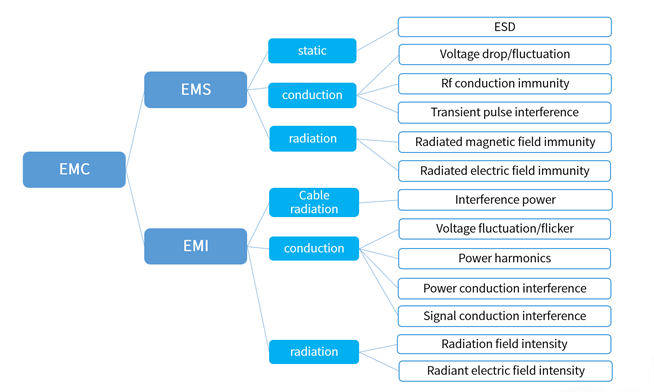
Electromagnetic Compatibility
Background

As electronic technology continues to be applied, Electromagnetic Compatibility is becoming an increasingly critical part of the product design process. Traditional electromagnetic compatibility mainly relies on experience and testing. Electromagnetic compatibility issues are random and diverse, involving multiple dimensions such as systems, subsystems, devices, components, and chips. They often coexist across multiple disciplines and influence each other. Furthermore, the cost of testing and rectifying issues increases towards the later stages of a project, with an uncontrollable time cycle. There is a lack of effective proactive design methods. Therefore, by using electromagnetic field simulation as an entry point to predict the electromagnetic radiation performance of the device to be tested in advance, and to balance the virtual verification of various improvement measures, it is possible to save testing costs and time to the maximum extent, and effectively improve the reliability and controllability of the system's electromagnetic compatibility , reducing project R&D risks.

Solution
![]()
EMC issues are complex and mysterious, involving a wide range of scales, a plethora of devices with diverse structures and a complex spectrum. Electromagnetic compatibility issues are often intricately linked with signal integrity and power integrity. Xpeddic's EDA solutions, through a powerful electromagnetic field simulation product matrix, can cover full-stack solutions from chips, packaging, components to systems. It fully consider power quality, signal quality, time-domain waveforms, and electrothermal multiphysics field coupling in actual projects, combining simulation and actual measurement and other forward designs based on virtual prototypes. This keeps electromagnetic compatibility risks controllable from the beginning of the design, effectively reduces costs and improves efficiency. Simulation has diverse data, can quickly verify based on different scenarios, different levels of systems, help engineers make choices and decisions, plan and allocate indicators overall, locate and rectify problems, conduct multiple virtual experiments to achieve the optimal solution, providing a new way of thinking for balancing quality and cost.

